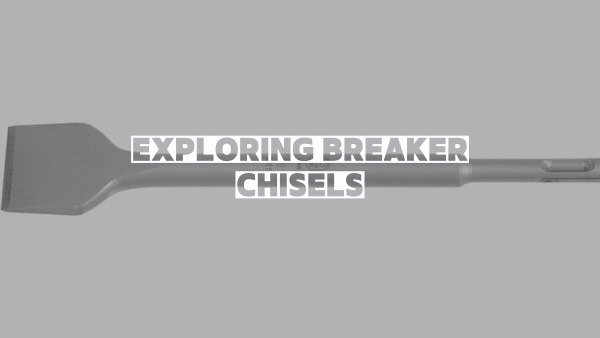Exploring Types Of Breaker Chisel.
When it comes to demolition tasks, you will find a huge array of breakers and chisels on the market. But, suddenly, several questions will spring to mind about what is going to be the best for your job. If you find yourself in this situation, then you’ll find the answers to most common questions all within this article. Ultimately, the correct breaker and chisel selection will drastically impact you overall efficiency. Let’s get started!
What is a breaker chisel?
Breaker chisels are used for the demolition of hard materials such as concrete, natural stone, asphalt and more. They come in a range of designs that attach to a breaker, assisting in the removal of hard materials. Breaker chisels are one of the most popular attachments for hammers, SDS drills, and all types of concrete breakers.
What are breaker chisels made of?
Breaker chisels are essential for the removal of hard materials when it comes to demolition. Meaning that they need to be constructed of a high-grade material to do so. Breaker chisels are manufactured by forged steel, allowing a vast amount of pressure and force to be put through them. They are available in several sizes, lengths, and styles to suit the equipment that they are manufactured for. Some designs are manufactured with different levels of alloy and nickel within them. This aids in different cooling rates and methods which can benefit the hardening process. The tougher the hardening process, the more energy can be exhorted through the chisel.

Types of concrete breakers you expect to see
If you are looking to remove hard materials such as concrete, natural stone, asphalt etc, you are going to need to be equipped with the right tools to get the job done. There are so many concrete breakers to choose from, so, it is difficult to know where to start. However, you can use this as a guide to help make sure you have adequate equipment to complete your project.
SDS Drill/ Medium Duty Hammer
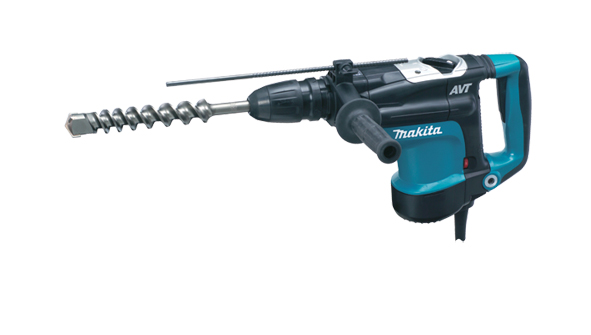
Medium duty hammers are popular for both indoor and outdoor use. As they are lightweight and easily manoeuvrable; weighing between 6-10kg, it makes them ideal for small space work in and outdoors. They offer adequate power and chiselling for the removal of tiles and none weight-baring walls. Most professional medium-duty hammers are powered by a 110V electrical supply, therefore you may require the use of a transformer to operate it. Medium duty hammers are ideal for breaking solid materials up to 75mm deep. Find an example of medium-duty hammer specifications here:
Heavy Duty Hammer

Heavy-duty hammers are popular with both DIYers and professional operators. They offer a heavier alternative with a higher impact force, allowing users to break through surfaces up to 125mm in depth. This type of hammer is ideal for use on driveways, patios or removing lightweight concrete flooring. Heavy-duty hammers can be expected to weigh around 15kg and require a larger chisel compared to a medium-duty breaker. Normally you can expect to use a 30mm reinforced hexagonal shafted chisel which is not suitable for an SDS or medium-duty hammer. Machines similar to this heavy-duty hammer are powered by 110V electricity to protect the operator in the event of an accident. Find an example of heavy-duty hammer specifications here:
Heavy Duty Road breaker
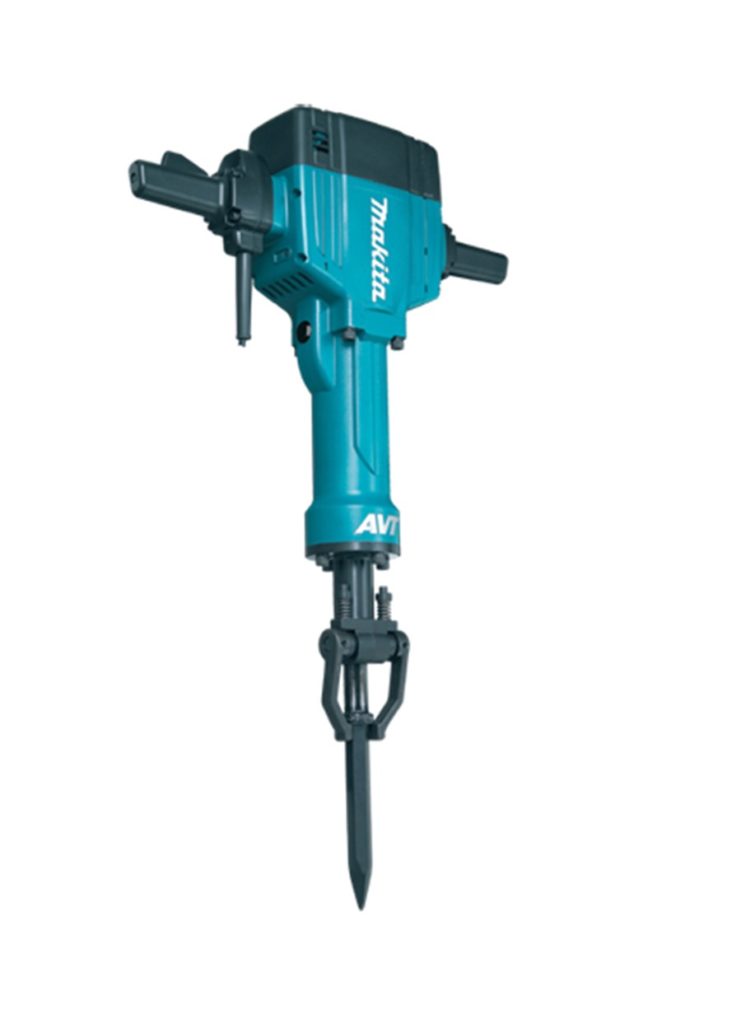
Heavy-duty road breakers are designed to break materials up to more than 300mm. These types of breakers are simplified for long periods of use. Armed with the same 30mm diameter chisels, these machines are powered by either 110v electricity or compressed air. Road breakers can weigh between 17-35kg, making them far less manoeuvrable than others. Nevertheless, road breakers are designed for outdoor heavy groundwork. Find an example of a heavy-duty road breaker here:
What breaker chisels are available?
Pointed
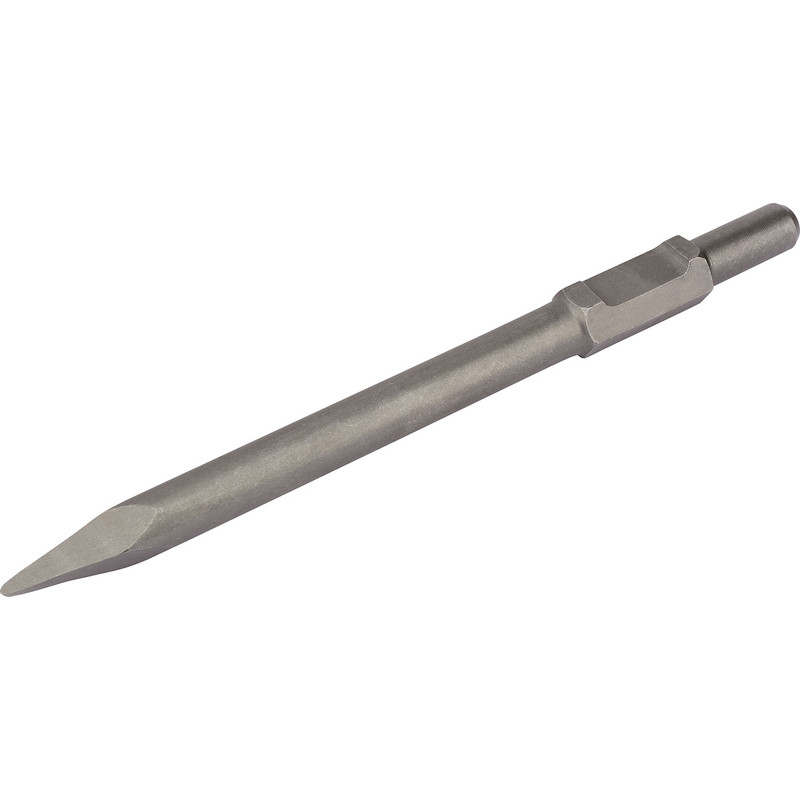
Pointed chisels are used to increase the amount of force through one area that you wish to demolish. This type of chisel is ideal for starting projects, chipping and removing large areas of debris at one time. It is regarded as the most commonly used type of breaking chisel, found with concrete breakers and hammers.
Flat
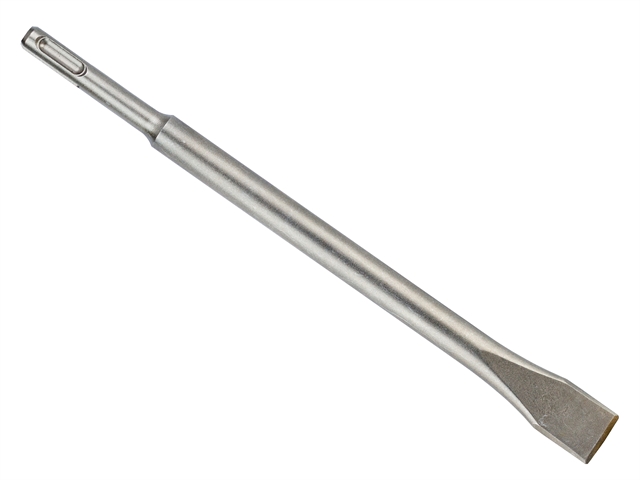
A flat-style chisel is used in the same way as a pointed chisel. However, unlike its alternative, this style allows operators to be far more accurate with their lines of breaking. This chisel is ideal for detailed work, resulting in a far cleaner break than other designs. Ideal for breaking and channelling in concrete, brickwork and masonry.
Spade
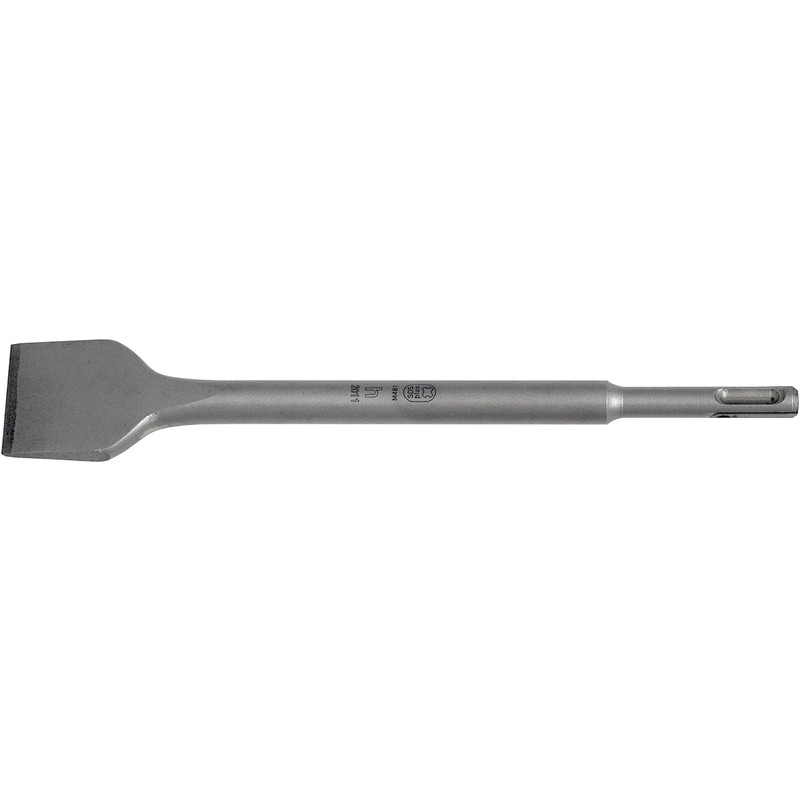
There are several applications of the spade chisel. It is well known for its precise cutting through of materials such as asphalt or hard-packed gravel. It is also a popular choice for the removal of tiles or plasterboard when attached to a medium-duty SDS or breaker. The spade chisel distributes the machine’s pressure across a large surface, making it NOT ideal for more dense surfaces such as reinforced concrete.
Which breaker chisel is best for concrete?
If you are planning on tackling the removal of any type of concrete, it is important to apply as much force into one small point at one time. Beginning your concrete removal with a pointed chisel is extremely important.
It is recommended to start at around 6- inches from the edge of the area you are working on. Use the breaker to chip through the concrete up to the maximum working depth of the machine. (See in types of concrete breakers you expect to see above).
Thereafter, remove the surface you have broken and continue the same method around 4-6 inches away from the previous. Always remember to work in small areas at one time and do not use the machine chisel to pry concrete apart.
Which breaker chisel is best for asphalt?
If you are planning to remove asphalt during your project, then understanding the best chisel to help can make all the difference. The best breaker chisel to cut and remove asphalt is the shape chisel. Why? This is because the wide spade chisel head distributes the energy of the power tool across a wider area.
This results in allowing you to cut through the surface with relative ease. Begin by marking the area that you are working on first. Then proceed breaking the asphalt from its edge, following your marked line, at 3- 6inch intervals. Be sure not to break any deeper than your hammer can handle. Incorrect use could cause damage to the machine or even to yourself.
How much does a concrete breaker cost to hire?
Based on an online survey (2022), you can expect to pay on average:
Medium duty breaker: £24.25 + Vat per day
Heavy-duty breaker: 37.25+ Vat per day
Road breaker: 44.75 + Vat per day
These prices may not include any additions required to operate the machinery. A variety of chisel options are generally available with the machine. Some additional extras could be such as a compressor or transformer. Be sure that you choose adequate machinery to ensure you can complete the job safely. If you are ever unsure, always consult a hire professional to help.
Where to hire a breaker chisel

WHC Hire has been supplying some of the highest quality demolition tools on the market for over 20 years. With a range of different pneumatic, electrical and 2-stroke breaker options, be sure to find the right machine and chisel to help. All our breakers come with a choice of breaker chisels to help you make lightweight of the job at hand.
For more information, see our breaker range or call your local depot on 01684377977.

